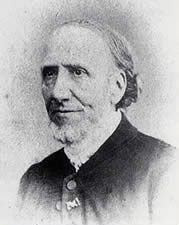|
Ultramarine Kingfisher
The ultramarine kingfisher (''Todiramphus leucopygius'') is a species of bird in the family Alcedinidae. Habitat It is found on Bougainville Island and the Solomon Islands. Its natural habitat is subtropical or tropical moist lowland forest A forest is an ecosystem characterized by a dense ecological community, community of trees. Hundreds of definitions of forest are used throughout the world, incorporating factors such as tree density, tree height, land use, legal standing, ...s. References ultramarine kingfisher Birds of Bougainville Island Birds of the Solomon Islands ultramarine kingfisher Taxonomy articles created by Polbot {{Coraciiformes-stub ... [...More Info...] [...Related Items...] OR: [Wikipedia] [Google] [Baidu] |
John Gerrard Keulemans
Johannes Gerardus Keulemans (8 June 1842 – 29 March 1912) was a Dutch bird illustrator. For most of his life he lived and worked in England, illustrating many of the best-known ornithology books of the nineteenth century. Biography Keulemans was born in Rotterdam. As a young man he collected animal specimens for museums such as the Natural History Museum in Leiden, whose director, Hermann Schlegel, encouraged Keulemans and sent him on the 1864 expedition to West Africa. In 1869, he was persuaded by Richard Bowdler Sharpe to illustrate his '' Monograph of the Alcedinidae, or Family of Kingfishers'' (1868-1871) and to move to England, where he lived for the rest of his life. He was married twice, and had eight children by his first wife and seven children by his second wife. Only nine of his children reached adulthood. He also wrote topics on spirituality, and claimed he had a premonition at the moment of death of one of his sons. He died in Ilford, Essex (now part of Greater Lo ... [...More Info...] [...Related Items...] OR: [Wikipedia] [Google] [Baidu] |
Jules Verreaux
Jules Pierre Verreaux (24 August 1807 – 7 September 1873) was a French botanist and ornithologist and a professional collector of and trader in natural history specimens. He was the brother of Édouard Verreaux and nephew of Pierre Antoine Delalande. Career Verreaux worked for the family business, Maison Verreaux, established in 1803 by his father, Jacques Philippe Verreaux, at Place des Vosges in Paris, which was the earliest known company that dealt in objects of natural history. The company funded collection expeditions to various parts of the world. Maison Verreaux sold many specimens to the Muséum National d'Histoire Naturelle to add to its collections. In 1830, while travelling in modern-day Botswana, Verreaux witnessed the burial of a Tswana people, Tswana warrior. Verreaux returned to the burial site under cover of night to dig up the African's body where he retrieved the skin, the skull and a few bones. Verreaux intended to ship the body back to France and so prepar ... [...More Info...] [...Related Items...] OR: [Wikipedia] [Google] [Baidu] |
Species
A species () is often defined as the largest group of organisms in which any two individuals of the appropriate sexes or mating types can produce fertile offspring, typically by sexual reproduction. It is the basic unit of Taxonomy (biology), classification and a taxonomic rank of an organism, as well as a unit of biodiversity. Other ways of defining species include their karyotype, DNA sequence, morphology (biology), morphology, behaviour, or ecological niche. In addition, palaeontologists use the concept of the chronospecies since fossil reproduction cannot be examined. The most recent rigorous estimate for the total number of species of eukaryotes is between 8 and 8.7 million. About 14% of these had been described by 2011. All species (except viruses) are given a binomial nomenclature, two-part name, a "binomen". The first part of a binomen is the name of a genus to which the species belongs. The second part is called the specific name (zoology), specific name or the specific ... [...More Info...] [...Related Items...] OR: [Wikipedia] [Google] [Baidu] |
Bird
Birds are a group of warm-blooded vertebrates constituting the class (biology), class Aves (), characterised by feathers, toothless beaked jaws, the Oviparity, laying of Eggshell, hard-shelled eggs, a high Metabolism, metabolic rate, a four-chambered heart, and a strong yet lightweight Bird skeleton, skeleton. Birds live worldwide and range in size from the bee hummingbird to the common ostrich. There are over 11,000 living species and they are split into 44 Order (biology), orders. More than half are passerine or "perching" birds. Birds have Bird wing, wings whose development varies according to species; the only known groups without wings are the extinct moa and elephant birds. Wings, which are modified forelimbs, gave birds the ability to fly, although further evolution has led to the Flightless bird, loss of flight in some birds, including ratites, penguins, and diverse endemism, endemic island species. The digestive and respiratory systems of birds are also uniquely a ... [...More Info...] [...Related Items...] OR: [Wikipedia] [Google] [Baidu] |
Family (taxonomy)
Family (, : ) is one of the eight major hierarchical taxonomic ranks in Linnaean taxonomy. It is classified between order and genus. A family may be divided into subfamilies, which are intermediate ranks between the ranks of family and genus. The official family names are Latin in origin; however, popular names are often used: for example, walnut trees and hickory trees belong to the family Juglandaceae, but that family is commonly referred to as the "walnut family". The delineation of what constitutes a family—or whether a described family should be acknowledged—is established and decided upon by active taxonomists. There are not strict regulations for outlining or acknowledging a family, yet in the realm of plants, these classifications often rely on both the vegetative and reproductive characteristics of plant species. Taxonomists frequently hold varying perspectives on these descriptions, leading to a lack of widespread consensus within the scientific community fo ... [...More Info...] [...Related Items...] OR: [Wikipedia] [Google] [Baidu] |
Bougainville Island
Bougainville Island (; Tok Pisin: ''Bogenvil'') is the main island of the Autonomous Region of Bougainville, which is part of Papua New Guinea. Its land area is . The highest point is Mount Balbi, on the main island, at . The much smaller Buka Island, , lies to the north, across the wide Buka Passage, Buka Strait. Even though the strait is narrow, there is no bridge across it, but there is a regular ferry service between the key settlements on either side. The main airstrip in the north is in the town of Buka. Buka has an outcropping that is from New Ireland (island), New Ireland. Among the large islands of Papua New Guinea, New Ireland is the closest to Buka. Bougainville is the largest island in the Solomon Islands (archipelago), Solomon Islands archipelago. It was previously the main landmass in the North Solomon Islands, North Solomons, which were associated with the German Empire. Most of the islands in this archipelago (which are primarily concentrated in the southern ... [...More Info...] [...Related Items...] OR: [Wikipedia] [Google] [Baidu] |
Solomon Islands
Solomon Islands, also known simply as the Solomons,John Prados, ''Islands of Destiny'', Dutton Caliber, 2012, p,20 and passim is an island country consisting of six major islands and over 1000 smaller islands in Melanesia, part of Oceania, to the northeast of Australia. It is directly adjacent to Autonomous Region of Bougainville, Bougainville, a part of Papua New Guinea to the west, Australia to the southwest, New Caledonia and Vanuatu to the southeast, Fiji, Wallis and Futuna, and Tuvalu to the east, and Nauru and the Federated States of Micronesia to the north. It has a total area of 28,896 square kilometres (11,157 sq mi), and a population of 734,887 according to the official estimates for mid-2023. Its capital and largest city, Honiara, is located on the largest island, Guadalcanal. The country takes its name from the wider area of the Solomon Islands (archipelago), Solomon Islands archipelago, which is a collection of Melanesian islands that also includes the Autonomous ... [...More Info...] [...Related Items...] OR: [Wikipedia] [Google] [Baidu] |
Habitat
In ecology, habitat refers to the array of resources, biotic factors that are present in an area, such as to support the survival and reproduction of a particular species. A species' habitat can be seen as the physical manifestation of its ecological niche. Thus "habitat" is a species-specific term, fundamentally different from concepts such as Biophysical environment, environment or vegetation assemblages, for which the term "habitat-type" is more appropriate. The physical factors may include (for example): soil, moisture, range of temperature, and Luminous intensity, light intensity. Biotic index, Biotic factors include the availability of food and the presence or absence of Predation, predators. Every species has particular habitat requirements, habitat generalist species are able to thrive in a wide array of environmental conditions while habitat specialist species require a very limited set of factors to survive. The habitat of a species is not necessarily found in a ge ... [...More Info...] [...Related Items...] OR: [Wikipedia] [Google] [Baidu] |
Forest
A forest is an ecosystem characterized by a dense ecological community, community of trees. Hundreds of definitions of forest are used throughout the world, incorporating factors such as tree density, tree height, land use, legal standing, and ecological function. The United Nations' Food and Agriculture Organization (FAO) defines a forest as, "Land spanning more than 0.5 hectares with trees higher than 5 meters and a Canopy (biology), canopy cover of more than 10 percent, or trees able to reach these thresholds ''in situ''. It does not include land that is predominantly under agricultural or urban use." Using this definition, ''Global Forest Resources Assessment (FRA), Global Forest Resources Assessment 2020'' found that forests covered , or approximately 31 percent of the world's land area in 2020. Forests are the largest Terrestrial ecosystem, terrestrial ecosystems of Earth by area, and are found around the globe. 45 percent of forest land is in the Tropical forest, trop ... [...More Info...] [...Related Items...] OR: [Wikipedia] [Google] [Baidu] |
Todiramphus
''Todiramphus'' is a genus of kingfishers in the subfamily Halcyoninae that are endemic to the Philippines, New Guinea, Australia, New Zealand and many islands in the South Pacific. Taxonomy The genus was introduced by the French surgeon and naturalist René Lesson in 1827. The name is often spelt ''Todirhamphus'' (with ''rh''), but ''Todiramphus'' is the original valid spelling. The name literally means "tody-bill"; tody is a relative of the kingfishers with a similar slender long bill, and the Greek ' () means "beak" or "bill". In 1945 James Peters in his ''Check-list of Birds of the World'' placed these species in an enlarged genus '' Halcyon''. Hilary Fry did the same in his 1992 monograph on kingfishers, but in 2001 Peter Woodall in the ''Handbook of the Birds of the World'' chose to place these Pacific flat-billed species in the resurrected genus ''Todiramphus''. This decision was vindicated by a molecular study published in 2006 that found that the enlarged ''Halcyon'' ... [...More Info...] [...Related Items...] OR: [Wikipedia] [Google] [Baidu] |
Birds Of Bougainville Island
Birds are a group of warm-blooded vertebrates constituting the class Aves (), characterised by feathers, toothless beaked jaws, the laying of hard-shelled eggs, a high metabolic rate, a four-chambered heart, and a strong yet lightweight skeleton. Birds live worldwide and range in size from the bee hummingbird to the common ostrich. There are over 11,000 living species and they are split into 44 orders. More than half are passerine or "perching" birds. Birds have wings whose development varies according to species; the only known groups without wings are the extinct moa and elephant birds. Wings, which are modified forelimbs, gave birds the ability to fly, although further evolution has led to the loss of flight in some birds, including ratites, penguins, and diverse endemic island species. The digestive and respiratory systems of birds are also uniquely adapted for flight. Some bird species of aquatic environments, particularly seabirds and some waterbirds, have furth ... [...More Info...] [...Related Items...] OR: [Wikipedia] [Google] [Baidu] |







